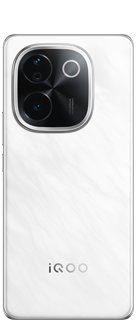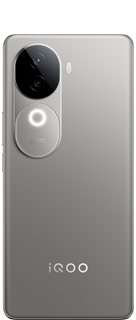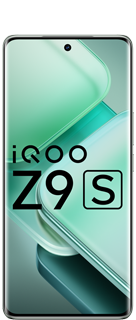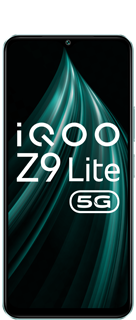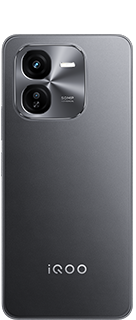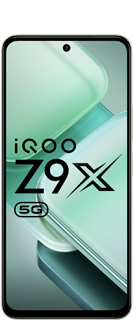The Snapdragon 8 Gen 2: solid CPU gains, impressive GPU upgrade
Qualcomm unveiled the Snapdragon 8 Gen 2 last month and the first phones with it are starting to come out. While the vivo X90 Pro+ was the first to be announced, we don't have a unit to test. But we do have an IQOO11, and we spent quite some time putting it through its paces.
Benchmarks of the new chip have been leaking for a while now; however, you can never be sure if there isn't anything shady going on with those. With the iQOO 11 on hand, we have a market-ready device that we know is on the level.
Our unit has 16GB of RAM and 256GB storage, which gives the Snapdragon 8 Gen 2 a great opportunity to shine. And, boy, does it shine! Keep in mind that this is a generational improvement, less so if you include the 8+ Gen 1 (which we did), and it still uses the TSMC N4 node. What Qualcomm has achieved is quite impressive.

Before proceeding to the charts, allow us to introduce the chip in more detail. The Snapdragon 8 Gen 2 uses a mix of ARM cores. The Cortex-X3 is the leader of the pack and based on official data, it should be 25% faster than the Cortex-X2 used in the Gen 1 chips. That is the guideline for single-threaded performance.
Then there is a mix of four mid-sized cores. Two are Cortex-A715, which should be 20% faster than the older A710 core. The Gen 2 chip also has two of those A710 cores, so multi-threaded performance is harder to estimate. This is based on data from ARM, Qualcomm says that the CPU is 35% faster overall (compared to the original 8 Gen 1 CPU) and 40% more efficient (which we are not testing today).
Here is a summary of the chipsets we are looking at today:

The Snapdragon 8 Gen 2 also uses the new Adreno 740 GPU. Qualcomm is secretive about the hardware specifics, but there must have been a major change. One interesting thing to note is that the 740 runs at lower clock speeds than the 730 in the Gen 1 chips. Even so, Qualcomm says that the new GPU is 25% faster than its predecessor (and 45% more efficient).
If anything, Qualcomm was conservative with its GPU claims – we’re seeing much larger speed ups even over the Snapdragon 8+ Gen 1, which itself was a modest improvement over the original chip from the beginning of this year (10% Faster). The focus of the Plus chip was power efficiency. And once that was achieved, Qualcomm could turn its attention to making things faster.
We will start with AnTuTu, which is a full system benchmark, to try and get a sense of the overall improvement brought on by Gen 2. This isn’t an entirely apples to apples comparison, as the Gen 1 chips only support LPDDR5 RAM and UFS 3.1 storage. The Snapdragon 8 Gen 2, however, supports the faster LPDDR5X DRAM and UFS 4.0 storage, and the iQOO 11 makes full use of them.

This is important to keep in mind – the chipset alone doesn’t determine real-life performance. By adding support for new, faster memory formats, Qualcomm has enabled makers to build faster phones.
Now, we can get a closer look at how the individual components perform. We start with Geekbench 5, which measures both single and multi-threaded performance. Remember, the target for single-core improvement is 25% over the Cortex-X2 at the same node and same clock speed (i.e. over the implementation seen in the 8+ Gen 1).
The chipset doesn’t quite hit that mark, but we’re not going to scoff at an 18% improvement over the 8+ Gen 1. The gap to the 8 Gen 1 chip is even wider, 26%, though that one could only run its prime core at 3.0GHz, so no surprise there. But the 8+ Gen 1 and 8 Gen 2 cores are clocked the same, so the speedup comes from the new architecture.

Multi-threaded workloads show a similar improvement of 22% over the 8+ Gen 1; the gap to the original Snapdragon 8 Gen 1 is even wider with a 33% speed up.

The CPU improvements are solid, if perhaps not groundbreaking. Qualcomm’s hands are tied here as it uses tweaked Cortex CPU cores from ARM. Maybe things will be different when the Nuvia team
delivers a mobile CPU Design, but this is the reality we have for 2023.
The Adreno GPUs are all Qualcomm, though, and they do surpass the +25% target in several tests. Before we get to that, we need to talk about resolution and frame rate. The iQOO 11 comes with a 1,440 x 3,200px display with up to 120Hz refresh rate (it's an LTPO4 panel).
However, plenty of phones with Gen 1 chips use FHD+ class displays. To keep the playing field level, we tried two different things: one, set the iQOO 11 to FHD+ resolution and two, look at offscreen results (where physical resolution doesn’t matter).
Conclusion
The new Adreno 740 GPU inside the Snapdragon 8 Gen 2 is truly impressive, and we haven’t even tested what it can do with ray tracing. The new chipset will enable high frame rate gaming in more titles than is currently possible, and it will allow developers to enable higher-quality graphic settings at the same time.
Something we didn’t look at today is sustained performance – that is something that varies from phone to phone. For the iQOO 11 in particular, our upcoming review will have information on that as well as other interesting performance metrics (like testing the UFS 4.0 storage).
There is one last thing to address, Qualcomm apparently has an upgraded version of the Snapdragon 8 Gen 2. This is just a rumour for now, Ice Universe claims that the Prime core runs at 3.36GHz (up from 3.2GHz) and that the GPU is at 719MHz (Up from 680MHz). Qualcomm has not officially confirmed the existence, but there are clues that suggest that the SM8550-AC is real, so we end this post with a “to be continued”.
SOURCE- GSMArena
Cheers
Thankyou
signing off,
#Moderator
Please sign in
Login and share












